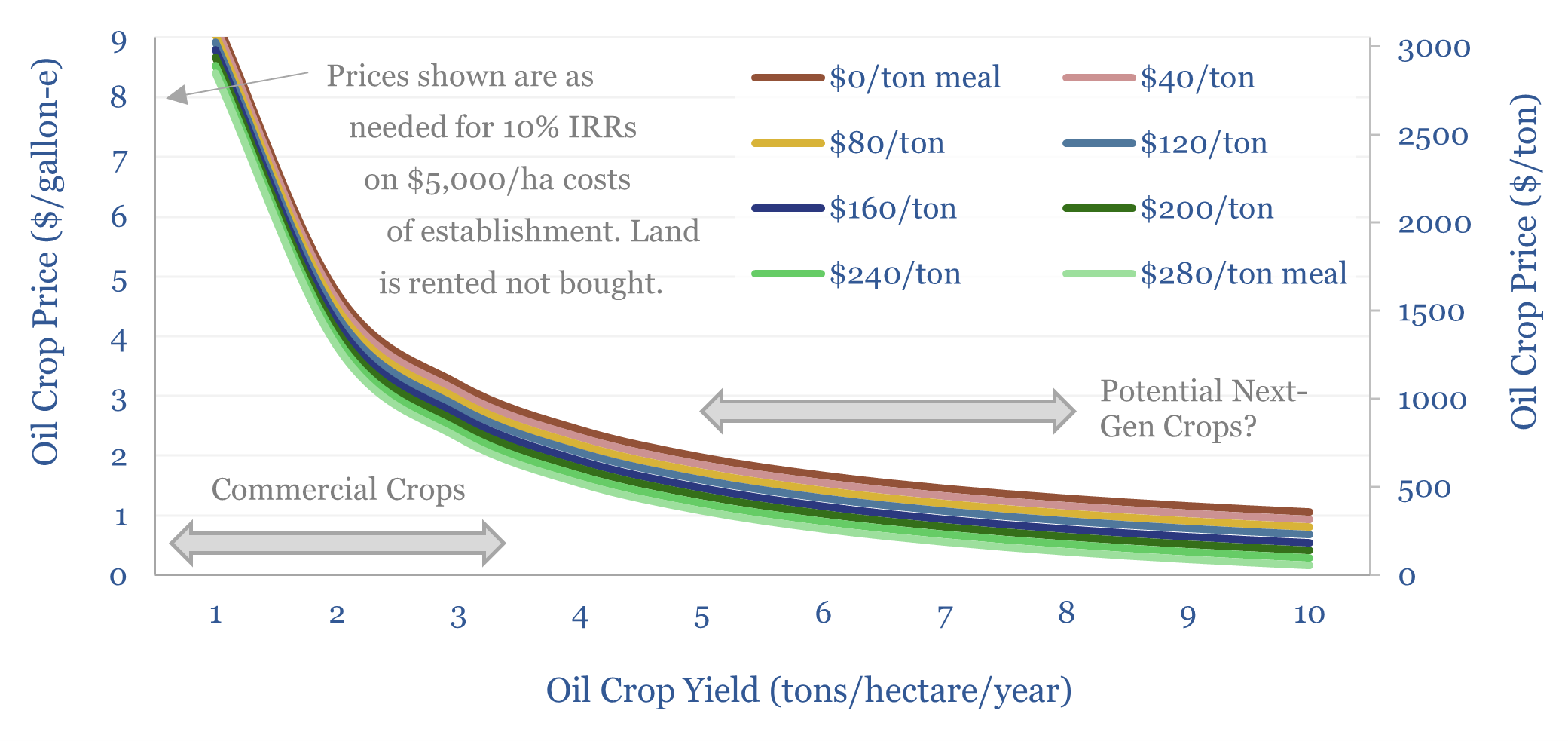As things stand, we argue Europe will be forced to scale back its SAF targets, due to Sustainable Aviation Fuel costs and land constraints. However, our 17-page report asks what could improve the outlook. Specifically, what yields, costs and other properties would we need to see from an oil crop to get excited about unlocking cost-competitive HEFA-SAF? And could any novel crops, such as Pongamia or Carinata, take flight?
Global jet fuel demand ran at 9Mbpd in 2024, for 2% of useful global energy, 2.3% of global CO2 emissions, and volumes are seen doubling to 18Mbpd by 2050, for the reasons on page 2.
SAF blending mandates have therefore been proposed in Europe, the UK, and discussed in other regions globally. But these mandates are controversial. Arguments in favor, and arguments against, are presented on pages 3-5.
We have looked at many SAF pathways in the past, from bio-GTL, to e-fuels, to corn ethanol or sugar ethanol via bio-ethylene to kerosene.
Nevertheless, the hydrotreating of esters and fatty acids (HEFA) into SAF is the only real pathway with strong momentum in our global biofuels outlook, discussed on pages 6-7.
The HEFA-SAF production process, and Sustainable Aviation Fuel costs, hinge crucially on the costs of feedstock oils, as broken down on pages 8-10.
So what would it take to lower the costs of these feedstocks. We have gone back to first principles on oil crop economics, covering rapeseed oil on page 11 and palm oil on pages 12-13.
Producing an agricultural oil, which unlocks HEFA-SAF at quasi-competitive pricing with fossil-kerosene, would require ticking the boxes summarized on page 14.
Most interesting across the landscape of next-gen crops have been Pongamia and Carinata. Their properties, progress and leading companies are discussed on pages 15-17.
